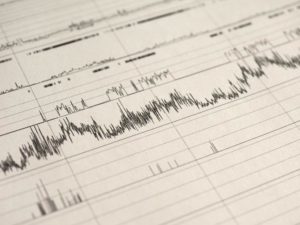Shift Work Disorder Symptoms
Shift work sleep disorder is a circadian rhythm sleep disorder characterized by sleep problems that stem from working long or irregular hours. The term “shift work” refers to any work schedule that falls outside the hours of 7 am and 6 pm . While any shift worker can develop symptoms , the disorder primarily affects employees with night, early morning, or rotating shifts.
If untreated, shift work disorder can lead to major health concerns. The condition may also negatively impact the worker’s professional performance and put them at a higher risk of committing an error or being involved in a workplace accident. Identifying shift work disorder symptoms and seeking treatment is vital to the patient’s health, wellbeing, and safety.
Primary Symptoms of Shift Work Disorder
According to the American Academy of Sleep Medicine’s International Classification of Sleep Disorders (Third Edition), the two primary symptoms of shift work disorder are:
- Insomnia: People with shift work disorder often have difficulty falling and/or staying asleep. Specific insomnia symptoms often vary by shift. For example, workers who clock in between 4 am and 7 am often have trouble falling asleep, while those with evening shifts tend to wake up during the night. The average person with shift work disorder loses one to four hours of sleep per night.
- Excessive sleepiness: Shift work disorder may cause fatigue and reduced alertness while the person is at work during the night or early morning hours. They often feel the need to nap at least once during their shift. These impairments can also decrease their performance capacity and can pose a safety risk.
Many shift workers experience sleep problems when they begin working irregular hours. In order to qualify for a shift work disorder diagnosis, the worker should report recurring symptoms for at least three months and, through actigraphy and sleep logging, demonstrate disturbed sleep-wake patterns for at least two weeks. Doctors may perform additional tests to ensure the symptoms are not better explained by another underlying illness or condition.
Shift Work Disorder vs. Insomnia
Insomnia is a sleep disorder characterized by “persistent difficulty” with sleep onset, duration, consolidation, or quality. People with insomnia struggle with sleep despite allotting themselves enough time at night and using a comfortable sleep area. They experience excessive daytime sleepiness and other impairments while they are awake. These impairments may include:
- Fatigue or malaise
- Difficulty paying attention or concentrating
- Memory impairment
- Mood disturbance or irritability
- Excessive daytime sleepiness
- Hyperactivity, impulsivity, aggression, and other behavioral problems
- Reduced motivation, energy, or initiative
- Higher risk of errors or accidents
- Feelings of sleep dissatisfaction
Insomnia may occur independently, but it often accompanies comorbid illnesses, mental health disorders, and sleep disorders. While shift work disorder is considered a separate condition, its diagnosis often hinges on insomnia symptoms. Studies have found that more people with shift work disorder have insomnia, as opposed to those who only experience excessive sleepiness at work without insomnia symptoms when they try to sleep.
The chicken-and-egg relationship between shift work disorder and insomnia is best explained like this: shift work can create a mismatch between your circadian rhythm and natural light and darkness cycles. This misalignment may cause you to experience problems falling asleep, staying asleep, or receiving high-quality sleep. Over time, these insomnia symptoms – coupled with continued shift work – cause you to experience significant sleep loss. This may warrant a diagnosis for shift work disorder. However, persistent insomnia symptoms may also warrant a separate diagnosis.
When insomnia symptoms persist for at least three times per week for at least three months , patients may receive a chronic insomnia diagnosis. The condition is known as short-term insomnia until the three-month duration benchmark is reached, as some people experience temporary insomnia symptoms due to environmental factors. Likewise, shift work disorder symptoms must be reported for at least three months to qualify for a diagnosis. For many shift workers, their symptoms begin to improve once they transition to a more traditional work schedule.

How Do Shift Work Disorder Symptoms Impact Everyday Life?
Shift work disorder can lead to serious long-term complications , including:
- Disease: Shift work disorder can put people at higher risk for various medical conditions, including cancer, cardiovascular disease, and gastrointestinal disorders.
- Alcohol and drug dependency: Many people with shift work disorder self-medicate with alcohol or drugs to improve their sleep.
- Poor diet: Some studies have linked shift work disorder with unhealthy eating habits.
Another glaring concern is worker safety. The combination of fatigue and impaired concentration puts people with shift work disorder at higher risk of being involved in an accident, either at their workplace or on the road while commuting to and from work. It’s believed several high-profile disasters have occurred due in part to work-related fatigue. These include the nuclear plant meltdown at Chernobyl in 1986 and the Exxon Valdez accident of 1989.
If you are a shift worker experiencing insomnia symptoms and/or excessive sleepiness while awake, you should see your doctor or a board-certified sleep physician for clinical evaluation and treatment options.
References
5 Sources
-
Redeker, N., Caruso, C., Hashmi, S., Mullington, J., Grandner, M., & Morganthaler, T. (2019). Workplace Interventions to Promote Sleep Health and an Alert, Healthy Workforce. Journal of Clinical Sleep Medicine, 15(4)., Retrieved from
https://pubmed.ncbi.nlm.nih.gov/30952228/ -
American Academy of Sleep Medicine. (2014). The International Classification of Sleep Disorders – Third Edition (ICSD-3). Darien, IL.
https://aasm.org/ -
Belcher, R., Gumenyuk, V., & Roth, T. (2015). Insomnia in Shift Work Disorder Relates to Occupational and Neurophysiological Impairment. Journal of Clinical Sleep Medicine, 11(4)., Retrieved from
https://pubmed.ncbi.nlm.nih.gov/25665690/ -
Wickwire, E., Geiger-Brown, J., Scharf, S., & Drake, C. (2017). Shift Work and Shift Work Sleep Disorder, Clinical and Organizational Perspectives. Chest, 151(5), 1156–1172.
https://www.ncbi.nlm.nih.gov/pmc/articles/PMC6859247/ -
Åkerstedt, T., & Wright, Jr., K. P. (2010). Sleep Loss and Fatigue in Shift Work and Shift Work Disorder. Sleep Medicine Clinics, 4(2), 257–271., Retrieved from
https://pubmed.ncbi.nlm.nih.gov/20640236/










